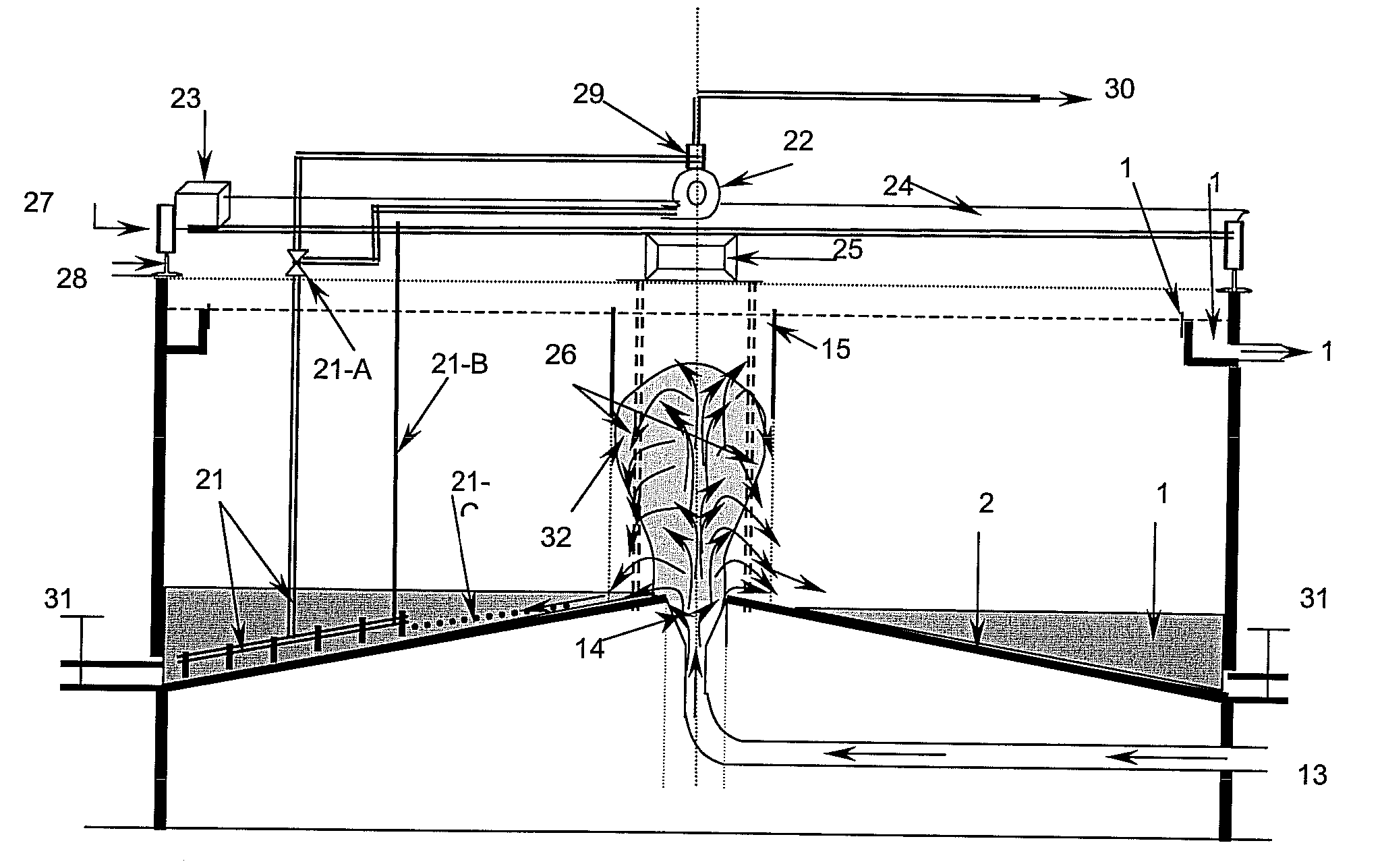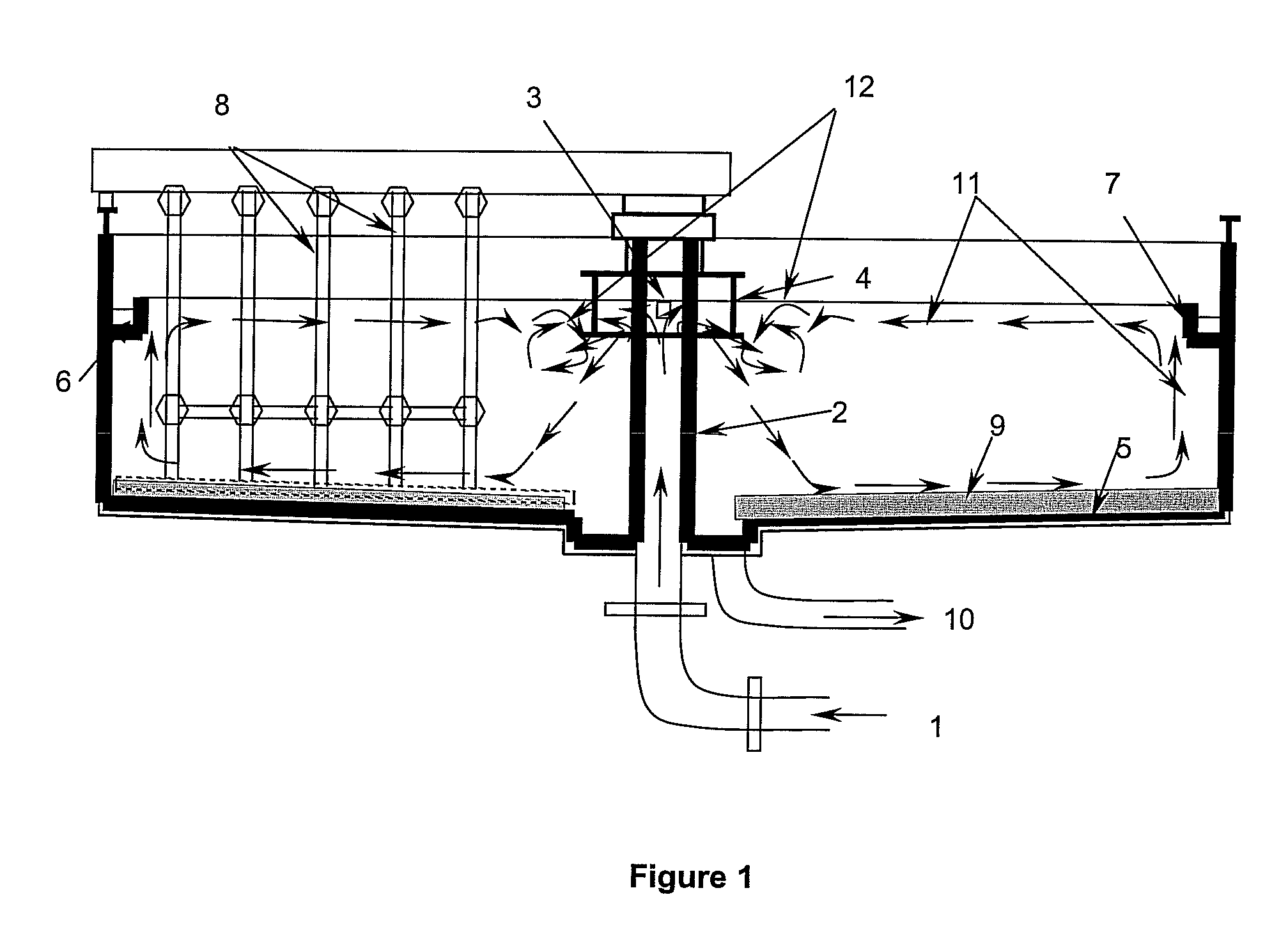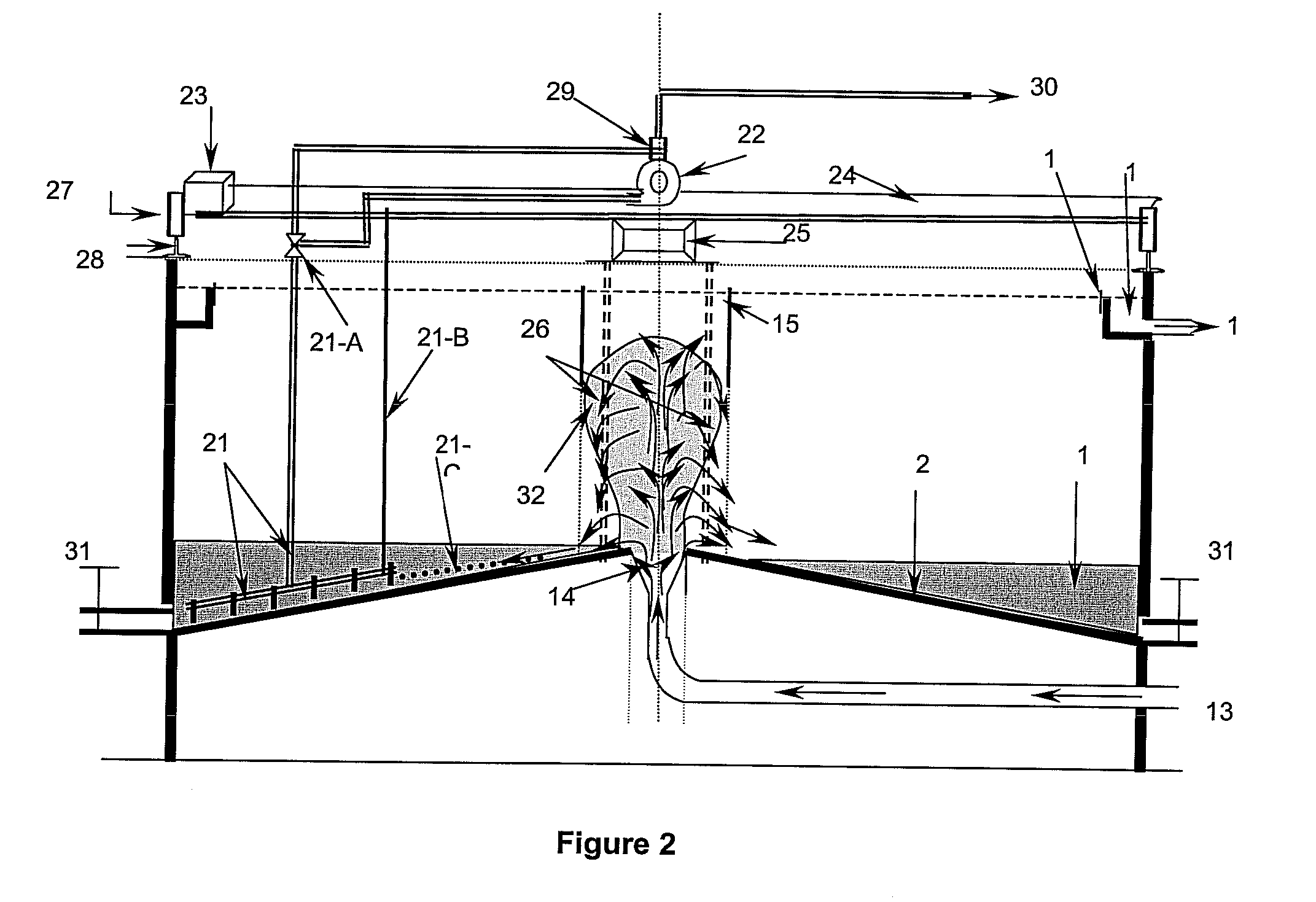Circular secondary clarifier for wastewater treatment and an improved s0lids-liquid separation process thereof
a secondary clarifier and wastewater treatment technology, applied in separation processes, liquid displacement, sedimentation settling tanks, etc., can solve the problems of reducing the concentration of underflow solids, deteriorating the quality of treated effluent, and thickening solids, so as to achieve the effect of substantially discharging hydraulic energy
- Summary
- Abstract
- Description
- Claims
- Application Information
AI Technical Summary
Benefits of technology
Problems solved by technology
Method used
Image
Examples
example-1
[0045]An optimized bench scale reactor of improved circular secondary clarifier was prepared using transparent Perspex cylinder of thickness 6 mm and internal diameter 430 mm and polycarbonate flexible sheet of thickness 2 mm. The influent pipe was made of glass tube of internal diameter 4 mm and thickness 1 mm and the tube diameter was gradually enlarged to 12 mm diameter over a length of 30 mm. The bottom of reactor was made of flexible polycarbonate sheet giving a slope of 1 in 10, away from the center. The water depths in the reactor at center and edges were 15 and 18 cm, respectively. The surface area of reactor was 0.1452 m2 and the volume was 24 L. The effluent collection channel called as launder was made of transparent Perspex ring and flexible polycarbonate sheet. The internal and external diameters of the ring were 432 and 460 mm respectively and the launder side wall was made of polycarbonate sheet of thickness 2 mm. A treated effluent outlet made of glass tube of intern...
example 2
[0046]The wastewater containing MLSS enters in clarifier through a low level inlet (13) that is gradually enlarged at the outlet (14) to distribute the wastewater uniformly all over the bottom (20). Gradual increase in pipe diameter reduces velocity of the incoming wastewater thereby reducing hydraulic energy and prevents jetting thus uniformly distributing wastewater at the bottom (20). The hydraulic energy of the incoming wastewater is substantially reduced due to gradual increase in feed pipe diameter and liquid level (33) starts increasing in the clarifier allowing the solids (34) to be accumulated at the bottom (20) towards the outer edges of clarifier. When the liquid level (35) starts rising the solids present in wastewater collide with each other just above the gradually enlarged outlet (14), thereby undergoing natural flocculation and form bigger solids referred to as flocs. The flocs further form a sludge cloud referred to as plume (36), which rises vertically upwards to s...
example 3
[0047]The reactor was subjected to various solids concentrations 500-5000 mg / L, and flow rates giving variable HRT ranging from 1.0-1.5 hrs. The various parameters, viz. effluent SS and BOD, Return activated sludge (RAS) concentration, SS profile and particle size analysis at various depths along the radius of the clarifier were carried out to arrive at the optimized performance of the secondary clarifier. Table 1 shows the performance of an improved bench scale secondary clarifier and Table 2 presents a comparison of an improved and conventional secondary clarifier after scale up. The effluent parameters with respect to SS, as shown in Table 1 are well within the prescribed Standards and the RAS concentrations are also high as compared to conventional clarifier. The effluent SS concentrations obtained from improved clarifier are less than those obtained from settling studies carried out in 1 L cylinder, which clearly indicates that the clarifier has capability of providing natural ...
PUM
| Property | Measurement | Unit |
|---|---|---|
| Hydraulic retention time | aaaaa | aaaaa |
| concentration | aaaaa | aaaaa |
| concentration | aaaaa | aaaaa |
Abstract
Description
Claims
Application Information
 Login to View More
Login to View More - R&D
- Intellectual Property
- Life Sciences
- Materials
- Tech Scout
- Unparalleled Data Quality
- Higher Quality Content
- 60% Fewer Hallucinations
Browse by: Latest US Patents, China's latest patents, Technical Efficacy Thesaurus, Application Domain, Technology Topic, Popular Technical Reports.
© 2025 PatSnap. All rights reserved.Legal|Privacy policy|Modern Slavery Act Transparency Statement|Sitemap|About US| Contact US: help@patsnap.com



